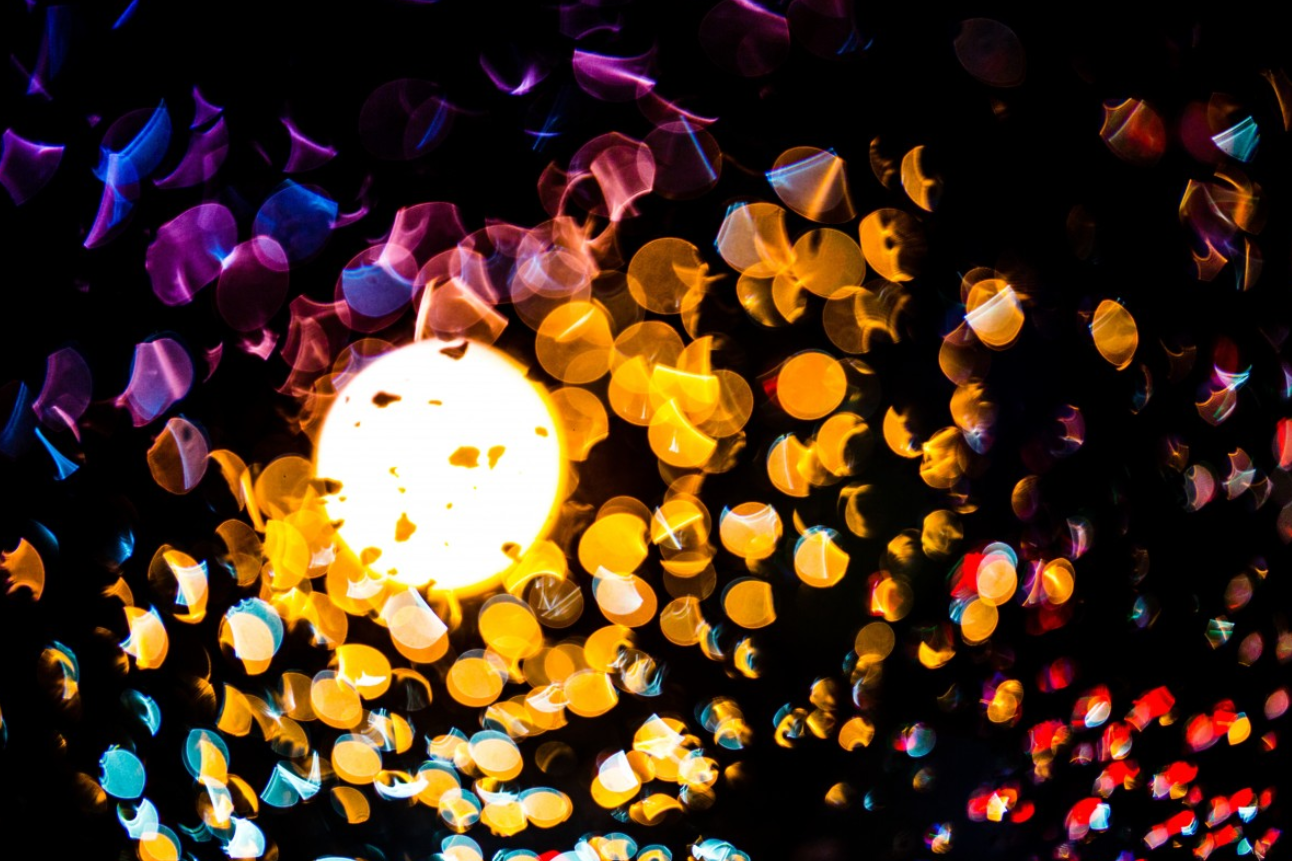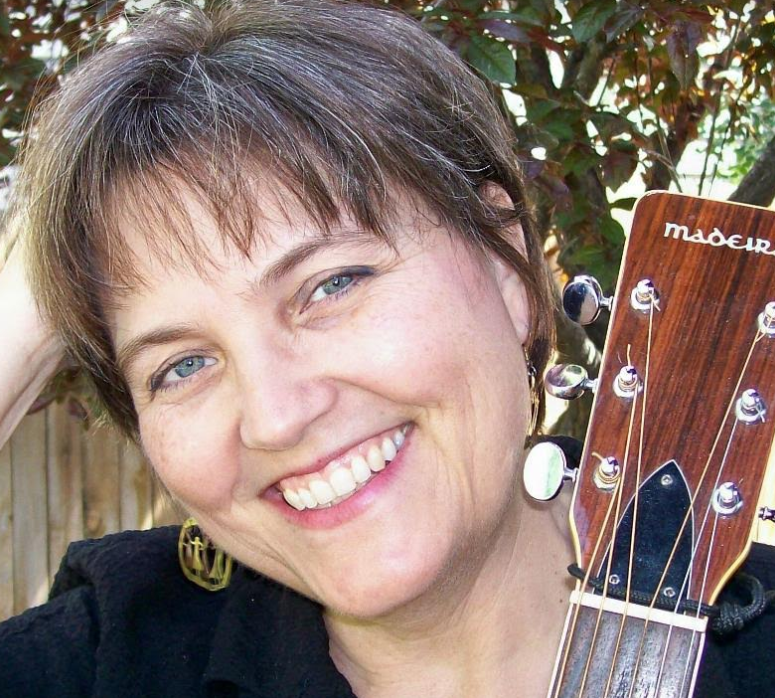Between You and Me
Shedding Light Along the Way
by Pam Faro
I am not Hindu, but one of my favorite stories is:
Hanuman the Monkey God – Photo: shankar s., C.c. 2.0
Hanuman the Monkey God came upon Lord Brahma, creator of the universe, and Lord Brahma was weeping.
“My Lord, what is wrong? Why are you crying?” Hanuman asked.
“Oh, dear Hanuman, I held the sparkling jewel of Wisdom in my hands. It was so beautiful! But I dropped it, and it shattered into millions of tiny pieces.” And Lord Brahma wept even harder.
“I see,” said Hanuman, nodding his head. “You dropped and broke the jewel; that is worth crying over.”
“No!” Brahma replied. “I’m crying because everyone who has found a piece of that jewel … believes they have the only piece!”
– Adapted from The Treasure in Your Heart – Yoga and Stories for Peaceful Children by Sydney Solis
Sharing “story” in any medium is valuable – movies, books, dance, visual art, and so on. Have you ever noticed that phrases such as “powerful storytelling” and “master storyteller” often seem to be the highest compliments paid to examples and creators of these other art forms? “Storytelling” is its own, unique, and uniquely powerful art form and human endeavor.
There are several thoughtfully crafted definitions of “storytelling.” I particularly like this brief one: “Storytelling is the intentional in-person sharing of a narrative through words and actions.”
Photo: Keshet, C.c. 2.0 nd
The “in-person sharing” is important. Being together in the same space with the teller, observing and responding to the presence and real-time responses of the listener(s), creates a unique experience. Research in psychology and brain science offers powerful indications that humans are hard-wired for story (in any medium), and that the act of engaging in face-to-face storytelling is powerful for both the individual’s imagination and the building and maintaining of community and communications. Listening to stories engages the same areas of the brain that living the experience itself would, nourishing empathy and understanding – and enabling us to virtually ‘walk in another’s shoes.’
And everyone is a storyteller! Whether you are ‘just’ recounting experiences in conversation, intentionally cultivating stories for use in your work or leisure, engaging in “kitchen table” storytelling, perhaps sharing stories in ministry, community events, or mediation – wherever you may be on the continuum from casual to professional storyteller – the power of storytelling is available to us all and offers solid benefits to interfaith work. Consider the following tale:
Starting with the Colorado stars overhead in the dark planetarium, we traveled through the heavens to the night sky over Australia – Wondrous! Wyoming-Aussie storyteller Paul Taylor, sharing Aboriginal stories of the Dreaming, showed photos of the land, the rocks, and the human paintings on the rocks. His didgeridoo sang to us, weaving the stars and the Rainbow Serpent and the red land and the black spaces between the stars and the stories and the people and the Dreaming all together.
It was utterly foreign to me. And … one of the most profoundly spiritual experiences I’ve ever had. I couldn’t actually enter that worldview, but in my listening and seeing the stories I could perceive, at least taste, a profound wholeness to it. And though it was utterly foreign to me, I experienced a measure of wonder and peace within myself, while being gifted with a peek at others’ lives and spirits, and was blessed by it.
I tell this story in the Interfaith Storytelling Workshop I have developed and given coast-to-coast for the past few years. It models remembering and sharing a story from a spirituality or faith tradition different than one’s own. We do this after an opportunity to share a familiar, meaningful story from their own tradition.
In the workshop we focus on sharing stories across religious/spiritual “lines” as both a hopeful microcosm of the world around us and a testing place for the kind of sharing that this world so badly needs.
““The shortest distance between two people is a story.”
- Anonymous
”
Storytelling is a powerful tool for connection and therefore also a powerful tool for the interfaith movement. I started to tell interfaith stories to help create connections and heal brokenness, stories that underscore common lessons and values that different faiths profess – far too many people today depend on stories that keep their faith disengaged from others.
Over the years of facilitating these workshops, responses from people of various faith traditions has been overwhelmingly positive.
Two of my favorites:
After giving “Interfaith Interplay” performance (stories drawn from 4-5 different traditions) at Emory University in Atlanta, a young Muslim student came up and said fervently, “Every single university needs to hear these stories!” (Well, that’s probably not going to happen, but point taken!);
After performing interfaith stories in Rome’s soaring basilica Sta. Maria del Popolo, a woman came up and, with a shining smile and wonderment in her eyes, said to me in enthusiastic Italian, “This was probably the first time Hebrew has been sung in this basilica!”
With a bit of trepidation (these aren’t all my traditions, I’m a lifelong Lutheran) I’ve sung in Hebrew (which I’ve studied some) and told Jewish traditional stories; I’ve recited Arabic poetry (in English translation) and told stories of the Prophet Muhammed – and have received wholehearted appreciation and encouragement from Jewish and Muslim listeners.
Here is one of the Muslim traditional stories I tell:
A teacher and his student were walking down the road. Suddenly, seemingly out of nowhere, a horse-pulled carriage came thundering up behind them so swiftly they had to jump into the ditch to save themselves. As they rose out of the ditch in the dust the carriage left behind, the teacher raised his fist and called out toward the carriage, “May your deepest desires be fulfilled!” Shocked, his student asked, “Why would you wish such a blessing on those who nearly killed us?” “If their deepest desires truly were fulfilled, if they were well and whole, they would have no interest in hurting us.”
Pam during one of her storytelling workshops – Photo: Story Crossings
Sometimes Christian workshop participants confess feeling they don’t have as strong a storytelling tradition as Jews do, or Buddhists, or some indigenous traditions. That might be a fair assessment in some sense, but the central Christian figure himself, Jesus, was definitely a storyteller, frequently teaching through parables.
One of my favorites is one of his shortest:
“The kingdom of heaven is like yeast that a woman took and mixed into three measures of flour, until all of it was leavened.” – Matthew 13:33
I’ve seen this tiny parable give rise (pun intended) to rich and many-layered discussions. Stories are shared from a wide variety of traditions around baking bread – including stories from other scriptures, poignant childhood memories, and cultural folktales. It has led people of different faiths to connection in profound ways.
Let me conclude with a favorite Jewish story I use in my workshops:
A rabbi asked his students, “How do we know when night has ended and day has begun?” The students knew this was an important question – after all, certain prayers and rituals are meant for only night or only day.
One student replied, “When I look out at the fields and it’s light enough to distinguish between my field and my neighbor’s, that’s when the night has ended and day has begun.”
A second student answered, “When I look from the fields and can tell which is my house and which is my neighbor’s, that’s when.”
A third student offered, “When I can distinguish the animals in the yard – when I can tell a cow from a horse, that’s when the night has ended.”
The rabbi sadly exclaimed, “No, no! It’s not about separating and dividing! Isn’t the world broken enough?” With a gentle voice he continued: “When you look into the face of any person and you can see that that person is your brother or your sister, when you can recognize that person as a friend, then, finally, the night has ended and the day has begun.”
Storytelling vitalizes the imagination, lights the way, and feeds the human spirit. Interfaith storytelling brings people together in non-threatening, often enlightening, and potentially profound ways. We need to share our sacred, cultural, and spiritual stories with each other, to help bridge the divides we face. Workshops and other events that help encourage and equip people to share their own sacred stories in interfaith groups will continue to proliferate. I don’t claim that it will lead us to “happily ever after,” but it will surely shed light along the way.
Header Photo: Pxhere





